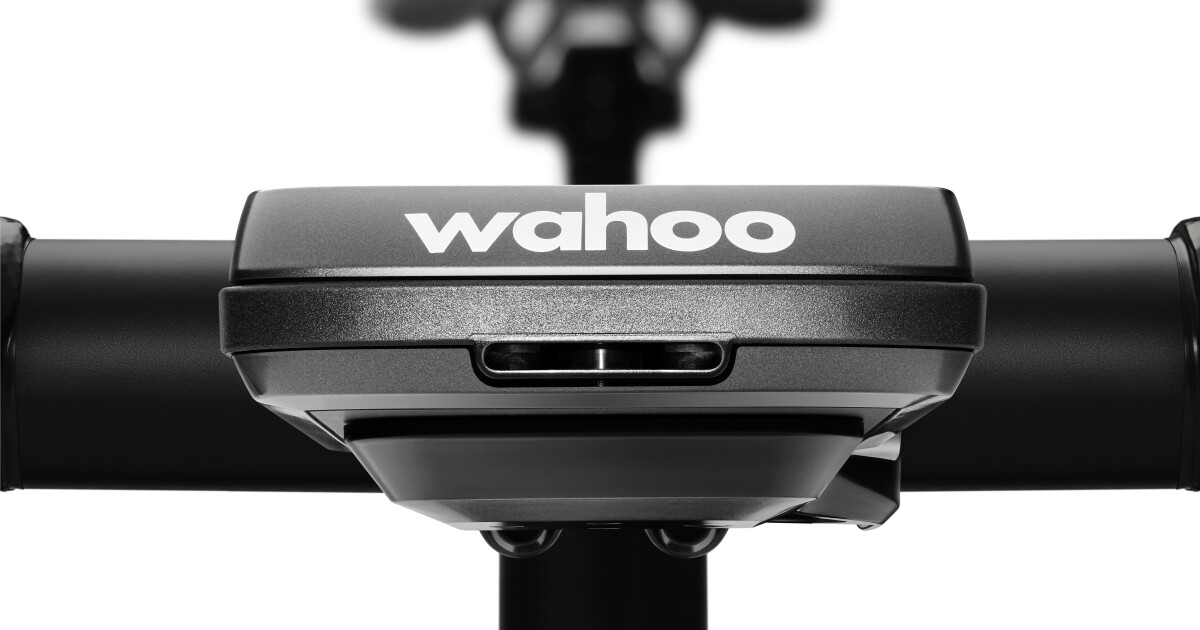We’ve already seen cycling computers that sport headlights, cameras and even giant batteries, but Wahoo Fitness may now have them all beat. The company’s new “first-in-its-class” Elemnt Ace cyclometer packs an integrated wind speed sensor.
Two months ago, I commented about the technical feasibility of determining real-time rider drag forces for a different device, and it was indeed possible although it was unclear what the rider should do when seeing that their drag has increased or decreased. For this cyclometer with wind-speed sensor, I’m even more skeptical, as the basis of operation is either omitting some details or is making environmental assumptions which will invariably be wrong.
The device’s Wahoo Wind Dynamics system utilizes an air pressure sensor (facilitated by an opening in the front of the cyclometer) to determine air speed. Onboard software compares that speed to the bike’s current ground speed, and arrives at the wind speed by calculating the difference between the two.
Using an air pressure sensor to determine air speed is what aircraft have been using for over 100 years, called a Pitot Tube. A Pitot Tube is mounted at the front of an aircraft with a tube sticking into the wind, so that the oncoming wind bunches up inside the tube. Compared to the air that isn’t moving, the tube will experience higher pressure in proportion to the wind speed. Hence, an instrument to measure wind speed.
But as the Wikipedia page kindly describes, “the measured stagnation pressure cannot itself be used to determine the fluid flow velocity (airspeed in aviation)”. What is missing from this cyclometer is a “static port”, which on an aircraft is usually placed facing to the sides, perpendicular to the direction of travel. That way, the air pressure at the static port is not influenced by forward air speed.
But it’s still not that simple, since both aircraft and bicycles turn, which might cause the static port to turn into the wind, affecting the readings. Aircraft solve this by having multiple static ports, on opposite sides of the aircraft, to compensate. Whereas it’s unclear if this cyclometer has even one static port.
In the absence of a static port, the raw air pressure reading would have to be compared to a reference value, such as 1013.25 hPa (29.92 inHg, or 1 atm, the avg pressure at Earth sea level). But that would yield a garbage wind speed value, as most places in the world are not at sea level, even if you live in San Francisco, New Orleans, or Hong Kong. But this cyclometer does have GPS, which can resolve altitude above sea level.
But even using the rule-of-thumb that 27 ft of elevation rise near ground will decrease pressure by 1 hPa, the fact of the matter is that local air pressure is extremely local and changes frequently with weather, especially during the daytime. This is why NOAA records it in as many places as they can, including at all airports, where it’s a critical component (ie QFE) of the automatic broadcasts for arriving aircraft. And it’s not even valid to take a reference measurement when the bike’s ground speed is zero, since the air pressure sensor may be facing into the wind, which would not accurately record static air pressure.
The aeronautics industry has basically perfected the instruments needed to measure the critical parameter of wind speed, and even though it’s become ever more accessible, the fact is that this cyclometer doesn’t seem to meet the basic requirements from Bernoulli’s Equation to properly measure air speed, which it needs to calculate the wind direction against the ground speed. I won’t even begin to guess whether this cyclometer assumes a flat surface or if it properly accounts for terrain when doing that ground speed calculation.
Contrary to what somebody else has said here, this IS potentially extremely useful as it paves the way for real-time aerodynamic calculations when paired with power data. mywindsock is the go-to resource for this, but briefly, with wind data your head unit could quite easily calculate real-time CDA, and as a result pretty much make the advantages of wind tunnel testing available to all of us - plus give instant feedback mid-ride on how well we’re holding a good aero position.
In short, this device could be a game-changer and I suspect every pro will have one almost immediately
Contrary to what somebody else has said here, this IS potentially extremely useful as it paves the way for real-time aerodynamic calculations when paired with power data.
Useful, yes! But I’m not sure what the “first in its class” thing is all about. Velocomp has been making sensors that can also collect wind speed data (among a ton of other things), for many, many years. I believe they are on their 5th gen device already.
It’s cool that Wahoo integrates this into their bike computer, and hopefully Garmin and other follow suit. One less sensor/device to worry about, and I’d much rather have my device report wind speed rather than a third-party software doing it based on a local weather station (i.e. Windfield for Garmin).
deleted by creator
deleted by creator



